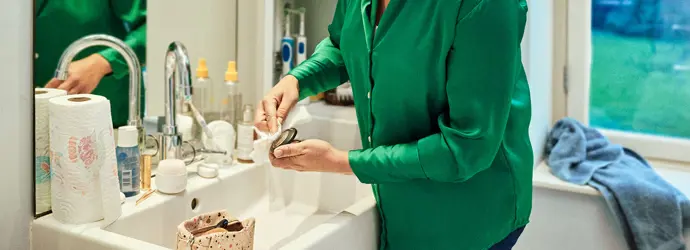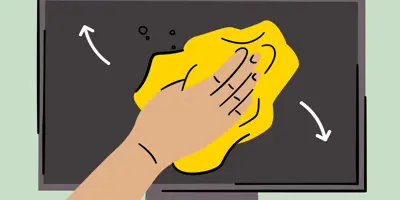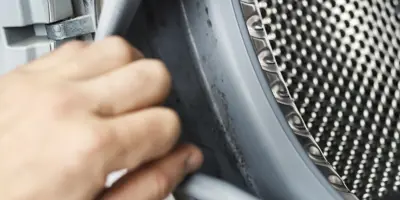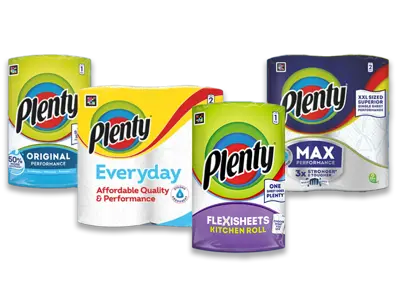13 people found this helpful

When the kids offer to do the washing up to show their love, we’re often met with two parts gratitude and one part angst. We know little bits of food — usually hidden leftover vegetables – are inevitably going to get mushed down the plughole. But we also know that every cloud has a silver lining, and the love we feel as they excitedly scrub-a-dub-dub those dinner plates is more than worth the clog. Besides, we know how to unblock a sink – especially when the water starts draining slowly, gurgling and coughing up gunk, so we’ve got you sorted.
How to unclog a sink with natural solutions
Kitchen sinks typically get blocked with sludge created by an icky combo of oil, grease and bits of food. And that gunk needs to be broken down, otherwise it’s going to get worse. And stinkier. If the kitchen sink starts regurgitating last night’s lasagne, this is your time to shine with a neat trick to get one of the trickiest and ickiest household chores done.
So, unclogging a sink with baking soda (or bicarbonate of soda, as it’s known in the UK) – how does that work? Well, when combined with white vinegar it makes an effective cleaning solution, because it can fizzle away and dissolve grime. Another plus is that it can neutralise odours too, so you can get rid of that gross, sewer-y smell lingering in your nostrils at the same time. Result. Here’s how:
- Boil a kettle of water. Or, if you’re going old school, bring some water to the boil in a large pan on the stove.
- Squeeze a little washing up liquid down the plughole to help start breaking down the grease.
- Pour the hot water down the plughole. Make sure you don’t pour boiling water straight after cold, as porcelain pipes can be vulnerable to cracks in quickly changing temperatures.
- Fill a cup with bicarb and pour it in. If you’ve got a funnel, that’ll help get every last bit into the hole.
- Pour a cup of white vinegar down. Go quiet and listen to the reaction. Fizziness? That’s just what you want. That’s the chemical reaction that’ll break down that grimy clump. It’s always worth testing any cleaning products – homemade or otherwise – on a small, discrete area or surface to be sure they don’t leave traces or react badly. But in this case, you want the fizz!
- Leave the solution to do its magic for five to 10 minutes, and then flush the rest of the gunk away with more boiling water. Don’t leave the solution for too long, or it'll corrode the sink’s surface. It’s powerful stuff!
- Unclogging a sink with baking soda and vinegar is very effective, but you may have to repeat the process. Especially if it’s a really stubborn blockage.
Great news! If you want to know how to unclog a bathroom sink, this method works for that job too.
Tip: Use a sheet of Plenty kitchen towel to wipe the sink rim after unclogging. It’s super strong, even when wet, so it won’t fall apart. That means you won’t end up with shreds of paper spoiling your work. Fist bumps to that.
How to unblock a sink with specialist cleaners
We’ve looked at unclogging a sink the natural way, but sometimes you have to call in the big guns – the specialist cleaners. The powerful stinky clog de-blockers. Here’s how to unclog a sink with specialist cleaners:
- For starters, these cleaners often contain ingredients that can irritate skin, so gloves on.
- Read the instructions on the label. And follow them. Unclogging a sink is their jam, they know what they’re doing, so take their advice and say goodbye to the gunk blockage safely.
- Ordinarily you’ll squeeze a designated amount directly down the plughole and leave it for a few hours, sometimes overnight. Just read the instructions closely.
- Once the de-blocker has done its work, you can flush everything through with clean water.
If you’re unclogging bathroom sink pipes, you should be able to use the same method. Just check the instructions before going ahead, and avoid mixing different cleaning products.
How to avoid clogging kitchen sinks again
Although you now know how to unclog a sink, that doesn’t mean you can leave the kids to do the washing up every night without offering a few helpful little pointers in the right direction. (Towards the bin, perhaps, to scrape in any leftover food...) Prevention is always better than cure, after all.
The following steps will help reduce the risk of blockages in the future, so you won’t need to consult our guide on unclogging bathroom sink and kitchen sink pipes again (fingers crossed):
- Carefully scrape away food before washing dishes. (Yes, kids – this one’s for you!)
- Don’t dispose of oil down the plughole.
- Keep your sink clean.
- Invest in a sink strainer or catcher. That’ll let the fluids through but catch the gunk. It’s much easier to wipe that out than unclog your sink, even if it means scooping week-old soggy cereal from the catcher into the bin with your bare hands. Shudder. (You can always use a sheet of trusty Plenty kitchen towel to spare your skin the burden.)
- Act quickly, if you do think there’s a blockage. The gurgles will tell you. And so will the pong. The quicker you act the easier the clog will be to remove.
Put these steps into action, and you should be waving good-bye to stinky kitchen sink blockages in no time. If you do get one, which is fairly inevitable at some point, you now know what to do. Right, kids... over to you!
Related articles
Your guide to disinfecting and deep cleaning the house
Learn the difference between deep cleaning the house and disinfecting your home, and tips on how to do deep clean and disinfect your home.

Air fryer cleaning: how to clean an air fryer
Learn how to keep an air fryer clean, how to clean your air fryer as well as other top air fryer cleaning tips with this handy air fryer cleaning guide.

How to get pee out of a mattress and clean a wet bed in 10 steps
Has your child wet the bed? Don’t panic. Simply read our guide to learn how to remove urine from a mattress and clean a wet bed.

How to clean a TV screen: Plenty’s top tips for a sparkling clean TV
Discover the best way to clean TV screens with Plenty. Tired of a streaky, thumbprint-covered picture? Read how to clean a TV so it looks brand new!

How to Clean Baby Toys & Disinfect Toys Covered in Goo
Being a parent involves many skills, like knowing how to sanitise baby toys! Find out how to clean soft baby toys, hard bath toys and teething toys here.

How to clean the washing machine seal when it's looking gunky
Cleaning a washing machine seal is boring but important! Learn about cleaning the rubber seal on a washing machine and how to prevent future gunkiness.


